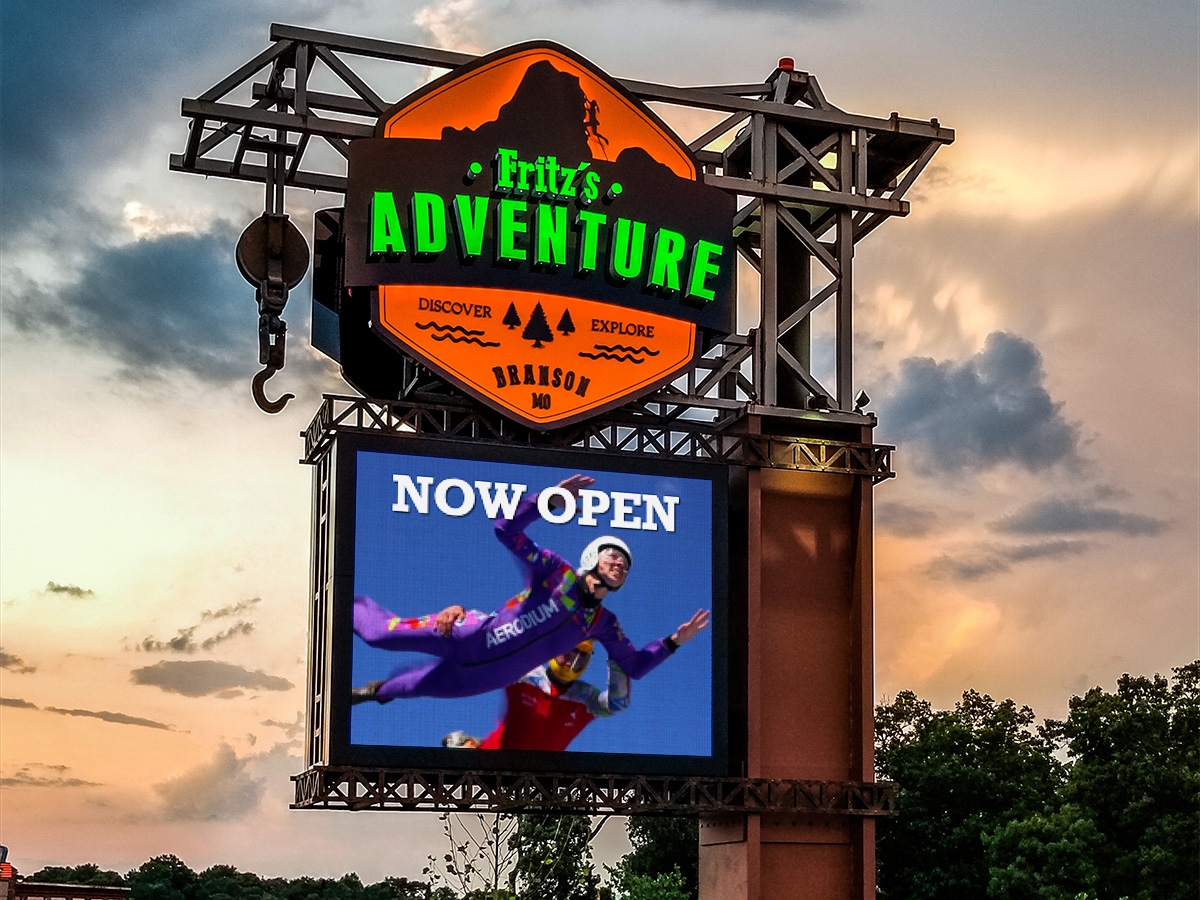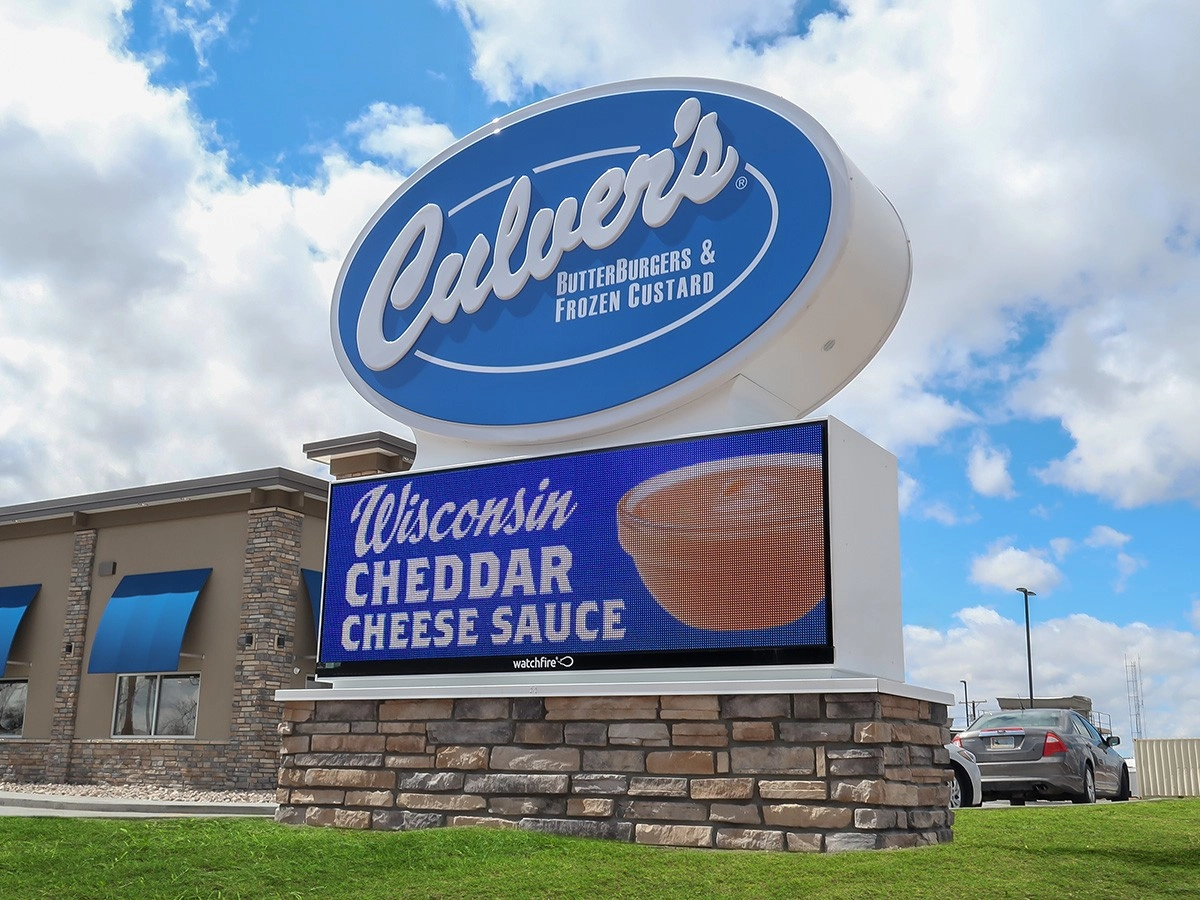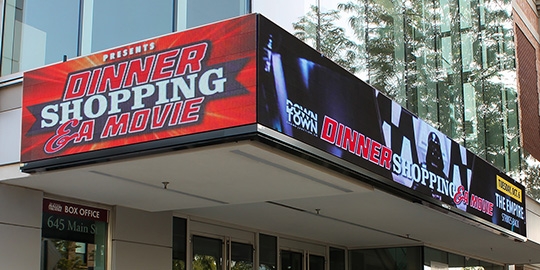LED Basic
What are LED Signs?

LED signs are dynamic, eye-catching displays that use light-emitting diodes (LEDs) to showcase text, graphics, animations, and videos. As a modern alternative to traditional signage, LED displays help businesses, schools, and municipalities stand out with vibrant messaging that attracts attention day or night.
Double-sided, single-face, wall-mount, or monument, an outdoor LED sign can make a huge impact on your business signage. An LED sign is a technical product, but choosing a manufacturer and sign company partner isn’t a tough task if you do a bit of research first.
Other LED sign manufacturers may try to confuse you with meaningless specifications and complicated jargon. Not us. Watchfire prefers to provide you with the knowledge you need to choose the right sign for your project. We want you to feel comfortable talking about our product with your business partners or board of directors and, of course, your local sign company. Here are a few of the key terms you will hear related to LED signs and why they are important to understand:
How Do LED Signs Work?
An LED sign is made up of LEDs that are grouped into pixels and arranged in a grid. An LED (light emitting diode) is an efficient, effective, and ultra-bright semiconductor and alternative to incandescent light bulbs. Watchfire uses only the highest quality single-bin LEDs that are grouped by color value and brightness to ensure uniformity throughout the sign. Our calibration process configures the whole sign to a level of uniformity that is 50x greater than the human eye can perceive, allowing our signs to age more gracefully. Lower-quality signs that are not calibrated can begin to show color variations in a “quilted” pattern – sometimes after only a few months of operation.
![]() Pixel Pitch
Pixel Pitch
You’ll often hear digital signs referred to by their pixel pitch (e.g. 4mm, 10mm, 19mm). The pixel pitch is effectively the resolution of the sign. The resolution of a sign is dependent upon the distance between each pixel, which is typically comprised of a cluster of three LEDs – one red, one green, and one blue. In some cases, the three LEDs may share a single lens, such as in our surface mount models. In our through-hole LED display products, each color is a separate diode. The distance between each complete pixel is measured in millimeters, and the smaller the pitch, the closer together the pixels are placed, giving you a tighter resolution with crisper and more life-like images.
Matrix
LED signs are often talked about in terms of sign “matrix”. This is simply the number of pixels high by the number of pixels wide your sign will be. Two signs that have the same outside dimensions but are not the same pitch will each have a different matrix. For instance, a 10mm sign that is 4’5” by 8’3” has a matrix of 120 x 240, while a 16mm sign of the same size has a matrix of 72 x 144.
Viewing Distance
Optimal viewing distance is the point at which the individual pixels begin to blend together to form a smooth, consistent image. Generally speaking, signs with a short distance between each pixel, such as our 6mm models, are best for close viewing distances. Wider pixel spacing, found on our 19mm models, is better for locations where the sign will be installed at a great height or are farther away from traffic.
Viewing Angle and Reading Angle
LEDs used in digital signs are generally considered directional light – where the output is pointed horizontally towards the viewer. Because of this, an LED is at full brightness when you look at it straight on, but as you move to the left or right of the LED, the brightness will decrease. The specified viewing angle is the angle at which the LED’s brightness is 50% less than it is when viewed at dead center. All Watchfire models have a horizontal viewing angle of at least 140o, which means that at 70o to the left or right of center, the brightness of the LEDs is half of what it is if viewed straight on.
Vertical viewing angles are calculated in much the same way, although sign louvers have been developed to reduce light spill away from the viewer. Vertical viewing angles are less likely to be equal above and below the LED since signs are typically viewed from below and are designed to minimize the light that is cast upward.
Reading angle is the angle at which a people can adequately read your LED message, and while typically greater than the viewing angle, it varies depending on lighting circumstances and your sign’s environment.
Types of LED Signs
Outdoor LED Signs
Designed to withstand harsh weather extremes, these signs are the workhorse of Main Street and are ideal for retail businesses, schools, churches and municipalities. Outdoor LED signs are considered on-premise displays, and they are used to display the goods and services of the business on the premises.
Indoor LED Displays
Perfect for lobbies, conference rooms and arenas, indoor videowalls and LED displays deliver high-resolution visuals at close viewing distances.
Price Watcher™ Gas Price Signs
Specialized for fuel and petroleum retail locations, gas price signs display accurate gas pricing and can be integrated with POS systems for real-time updates.
Digital Billboards
Large outdoor displays for the OOH industry, digital billboards require municipal approval and permits and are used to sell advertising to area businesses.
Sports Video Displays and Scoreboards
Facilities of all sizes use sports displays to engage fans with video, replays, and dynamic scoring systems. From game operations to scoring and timing, video scoreboards improve the game experience from high school sports to the pros.
Why Choose Watchfire?
With over 90 years of innovation and 70,000+ installations across North America, Watchfire is the industry leader for quality, support, software and customer satisfaction. Our product design, warranty, and service after the sale are hallmarks of quality that have stood the test of time. Contact Watchfire for a free consultation and discover how an LED sign can transform your visibility and grow your business.


